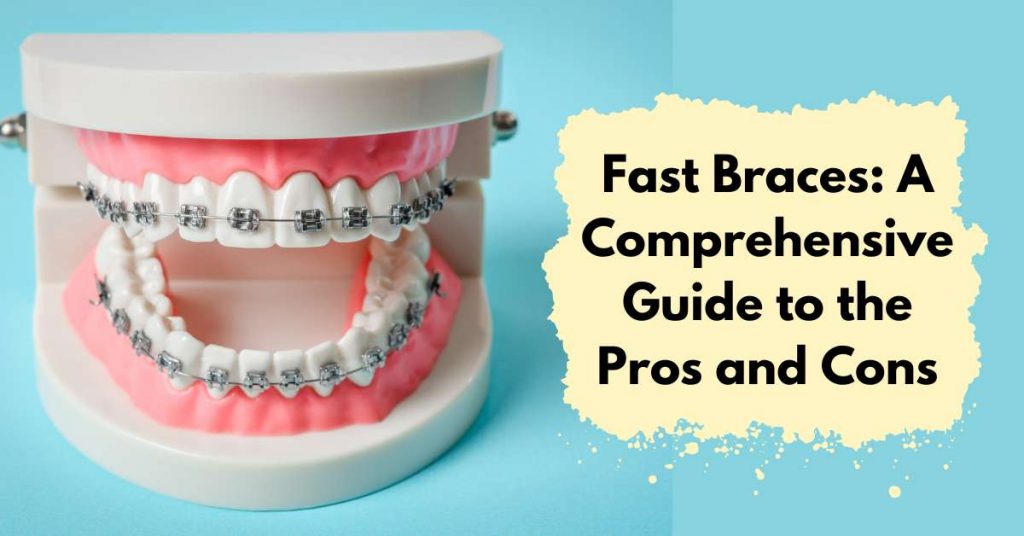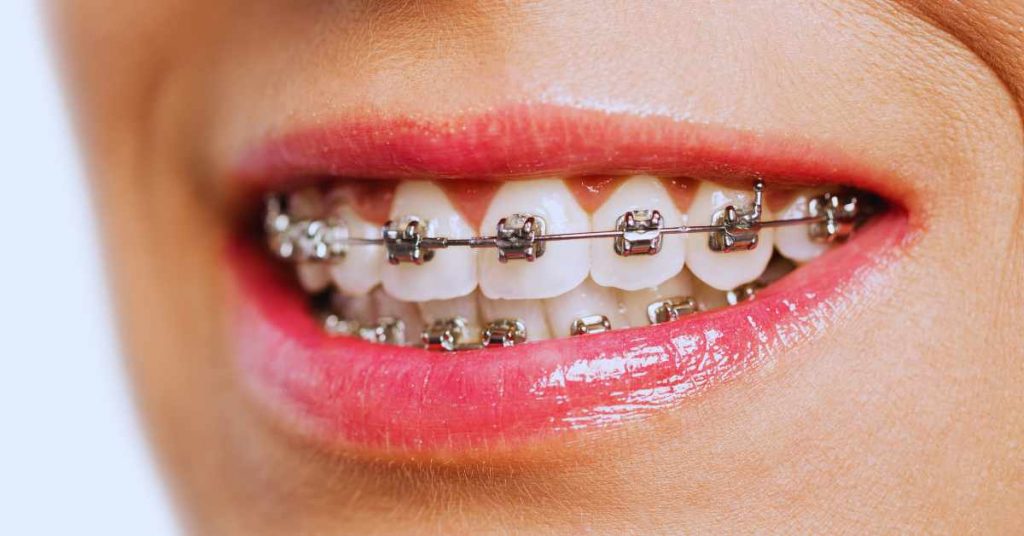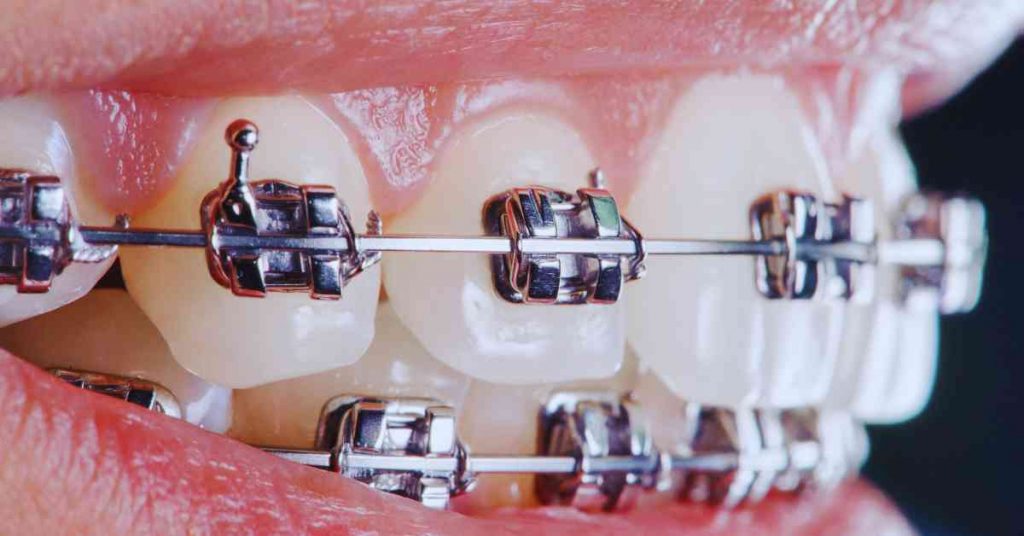Fast Braces Pros And Cons You Need to Know

Pros and Cons of Fast Braces: Is Speed Worth It?
Fast braces have emerged as a popular option in orthodontic treatment because they deliver efficient results in shorter periods.
In this article, we will delve into the world of fast braces and explore the advantages and disadvantages of this innovative approach to orthodontic care.
Let's dive into the Fast Braces Pros And Cons.
- What Are Fast Braces?
- The Advantages of Fast Braces
- Considerations Before Opting for Fast Braces
- Potential Disadvantages of Fast Braces
- Types of Fast Braces
- The Treatment Process with Fast Braces
- Real-Life Success Stories
- Comparing Fast Braces with Traditional Braces
- The Role of Orthodontists in Fast Braces Treatment
- Caring for Fast Braces
- Bottom Line
- FAQs: Fast Braces: Pros And Cons
- Q: What are fast braces, and how do they work?
- Q: How long does the treatment with fast braces usually take?
- Q: Are fast braces suitable for all orthodontic issues?
- Q: Are there different types of fast braces available?
- Q: Is the treatment with fast braces painful?
- Q: Can fast adults use braces, or are they only for children and teenagers?
- Q: How do fast braces compare to traditional braces in appearance?
- Q: Do fast braces require fewer dental visits than traditional braces?
- Q: Are there any specific aftercare instructions for patients with fast braces?
- Q: How do I know if I am a suitable candidate for fast braces?
What Are Fast Braces?
Fast braces (accelerated braces) are orthodontic appliances designed to align and straighten teeth faster than traditional braces. They employ innovative techniques and materials to expedite the movement of teeth, resulting in reduced treatment duration.

The Advantages of Fast Braces
Faster Treatment Time:
One of the most significant advantages of fast braces is their ability to achieve desired results in a fraction of the time required by traditional braces.
Improved Aesthetics:
Fast braces offer discreet options, such as clear aligners or ceramic brackets, making them a preferred choice for individuals seeking a more cosmetically appealing orthodontic solution.
Enhanced Comfort:
Fast braces are designed to minimize discomfort during treatment, resulting in a more pleasant experience for patients.
Fewer Dental Visits:
The accelerated nature of fast braces often requires fewer dental visits, making it a convenient option for individuals with busy schedules.
Considerations Before Opting for Fast Braces
Eligibility Criteria:
While fast braces suit many individuals, not everyone may be an ideal candidate. Orthodontists will assess a patient's dental condition and determine their eligibility for fast braces.
Limitations for Complex Cases:
Fast braces may not be as effective for severe or complex orthodontic issues that require more extensive treatment.

Potential Disadvantages of Fast Braces
Limited Effectiveness for Severe Cases:
Fast braces may not achieve the same correction level for severe malocclusions as traditional braces or other orthodontic treatments.
Cost Implications:
Fast braces can be more expensive than traditional braces, and some patients may need to consider their budget before opting for this treatment.
Adjustment Period and Discomfort:
As with any orthodontic treatment, patients may experience discomfort and an adjustment period during the initial stages of wearing fast braces.
Types of Fast Braces
Fast braces come in different types, including clear aligners and ceramic brackets. Orthodontists can guide patients in selecting the most suitable option based on their needs.
Fast braces have evolved to offer various options to suit different orthodontic needs and patient preferences. Each type of fast brace comes with its unique design and benefits.
Let's explore some of the common types:
Traditional Fast Braces:
Traditional fast braces, known as standard fast braces, use the innovative triangular bracket and specialized wire system to expedite teeth movement. This type of fast brace focuses on aligning both the crown and root of the teeth simultaneously, leading to faster results than traditional braces.
Ceramic Fast Braces:
Ceramic fast braces combine the efficiency of fast braces with the discreetness of ceramic brackets. These brackets are made from tooth-colored or clear materials, making them less noticeable than traditional metal brackets. Ceramic fast braces offer a more aesthetic option for those who want to minimize the visibility of their braces.
Lingual Fast Braces:
Lingual fast braces take discretion to the next level by being placed on the teeth' back (lingual) surfaces. This means that the brackets and wires are virtually invisible when you smile. Lingual fast braces are an excellent choice for individuals prioritizing effective treatment and a discreet appearance.
Self-Ligating Fast Braces:
Self-ligating fast braces feature brackets with built-in clips to hold the archwire in place, eliminating the need for traditional elastic or metal ligatures. This design reduces friction and allows for smoother teeth movement. Self-ligating fast braces are known for their comfort and efficiency.
Clear Aligner Fast Braces:
Clear aligner fast braces offer a virtually invisible orthodontic solution. Instead of brackets and wires, these aligners are made from transparent plastic and are removable. They're a popular choice for individuals seeking a discreet treatment option that can be easily taken out for eating, brushing, and special occasions.
Hybrid Fast Braces:
Hybrid fast braces combine the benefits of different orthodontic technologies. For instance, they might incorporate self-ligating brackets with a triangular design for efficient movement. Hybrid fast braces aim to provide a balanced approach to achieving a quicker, more comfortable, and more effective smile transformation.
Customized Fast Braces:
Some orthodontists offer customized, fast braces tailored to the individual's unique dental anatomy and needs. These braces are designed using advanced digital technology, ensuring optimal efficiency and comfort throughout treatment.
Before embarking on your fast braces journey, it's essential to consult with an experienced orthodontist. They can recommend the most suitable fast braces based on your dental concerns and treatment goals. Remember that each type of fast brace has advantages and considerations, so exploring your options will help you make an informed decision.

The Treatment Process with Fast Braces
Getting fast braces involves a series of steps, including initial consultations, orthodontic assessments, fitting of the braces, and regular follow-up visits to monitor progress.
Real-Life Success Stories
Many individuals have achieved remarkable results with fast braces. Their success stories serve as inspiration for those considering this treatment option.
Comparing Fast Braces with Traditional Braces
A comparison between fast braces and traditional braces will help patients make an informed decisions based on their preferences and treatment goals.
The Role of Orthodontists in Fast Braces Treatment
Orthodontists are crucial in determining the most suitable treatment plan and ensuring successful outcomes with fast braces.
Caring for Fast Braces
Proper oral hygiene and regular check-ups with the orthodontist are essential for maintaining healthy teeth and gums throughout the fast braces treatment.
Bottom Line
Fast braces offer a promising alternative for individuals seeking quicker orthodontic treatment. While they come with several advantages, it is essential to consider individual dental needs and consult with a qualified orthodontist before deciding. With the right guidance and care, fast braces can be an excellent solution for achieving a beautiful and confident smile.
FAQs: Fast Braces: Pros And Cons
Q: What are fast braces, and how do they work?
A: Fast braces are orthodontic appliances designed to straighten teeth faster than traditional braces. They use innovative techniques to expedite tooth movement, resulting in shorter treatment times.
Q: How long does the treatment with fast braces usually take?
A: The treatment duration with fast braces can vary depending on dental conditions. However, it typically ranges from a few months to about a year, much shorter than traditional braces.
Q: Are fast braces suitable for all orthodontic issues?
A: Fast braces are effective for many orthodontic concerns, including overcrowding, misalignment, and gaps between teeth. However, complex cases may require alternative treatment options.
Q: Are there different types of fast braces available?
A: Fast braces come in various types, such as clear aligners and ceramic brackets. The choice of fast braces depends on the patient's specific needs and preferences.
Q: Is the treatment with fast braces painful?
A: Patients may experience some discomfort and soreness during the initial stages of treatment, similar to traditional braces. However, this discomfort usually subsides as the teeth adjust.
Q: Can fast adults use braces, or are they only for children and teenagers?
A: Fast braces are suitable for both adults and teenagers. They can be an excellent option for adults seeking a quicker orthodontic solution.
Q: How do fast braces compare to traditional braces in appearance?
A: Fast braces offer discreet options, such as clear aligners or tooth-colored brackets, making them less noticeable than traditional metal braces.
Q: Do fast braces require fewer dental visits than traditional braces?
A: One of the advantages of fast braces is that they often require fewer dental visits, which can benefit individuals with busy schedules.
Q: Are there any specific aftercare instructions for patients with fast braces?
A: Patients with fast braces should maintain good oral hygiene, including regular brushing, flossing, and attending follow-up appointments with the orthodontist.
Q: How do I know if I am a suitable candidate for fast braces?
A: A consultation with an orthodontist is necessary to determine if fast braces are the right option for your dental needs. The orthodontist will conduct an assessment and discuss the treatment plan with you.
I hope this article regarding Fast Braces Pros And Cons will clarify your idea about braces. If you have any questions about Fast Braces Pros And Cons, please feel free to comment.

Recommendation